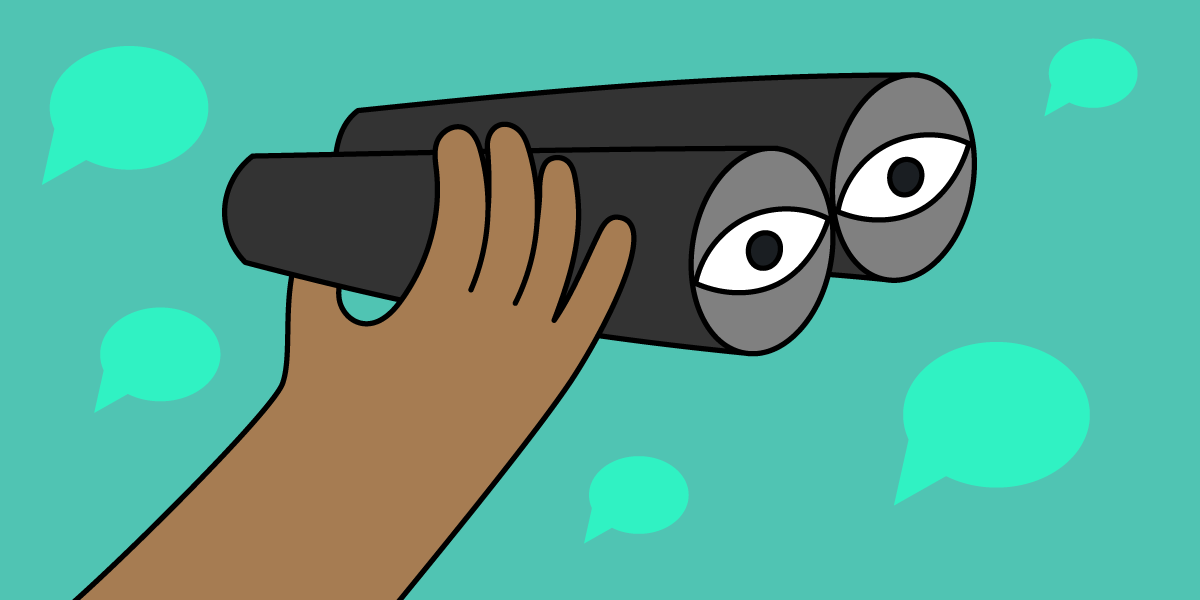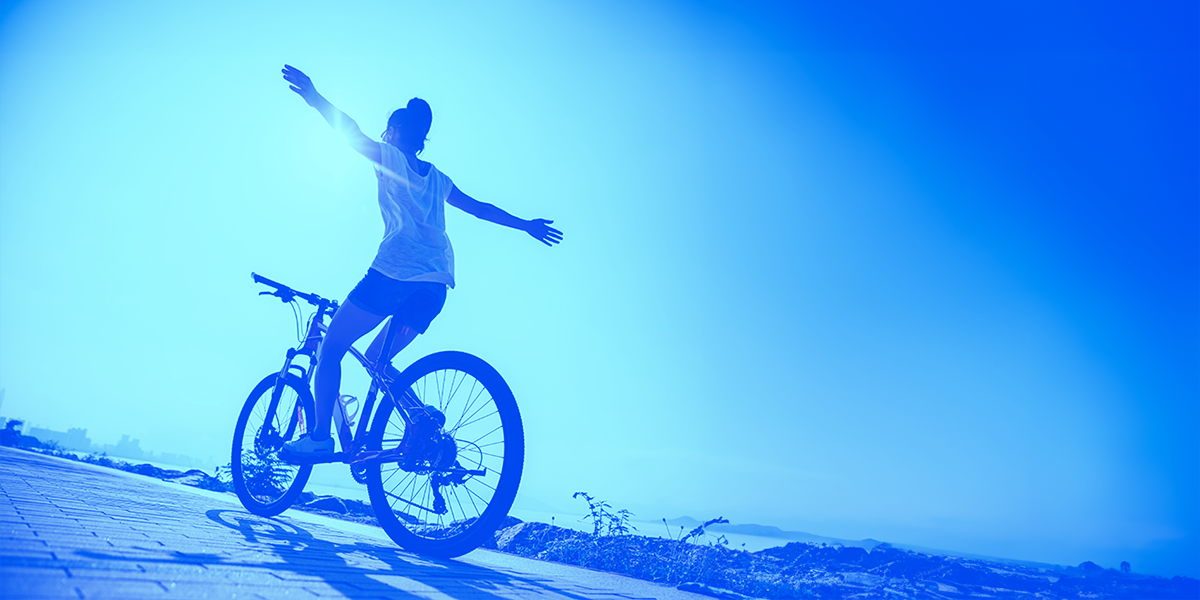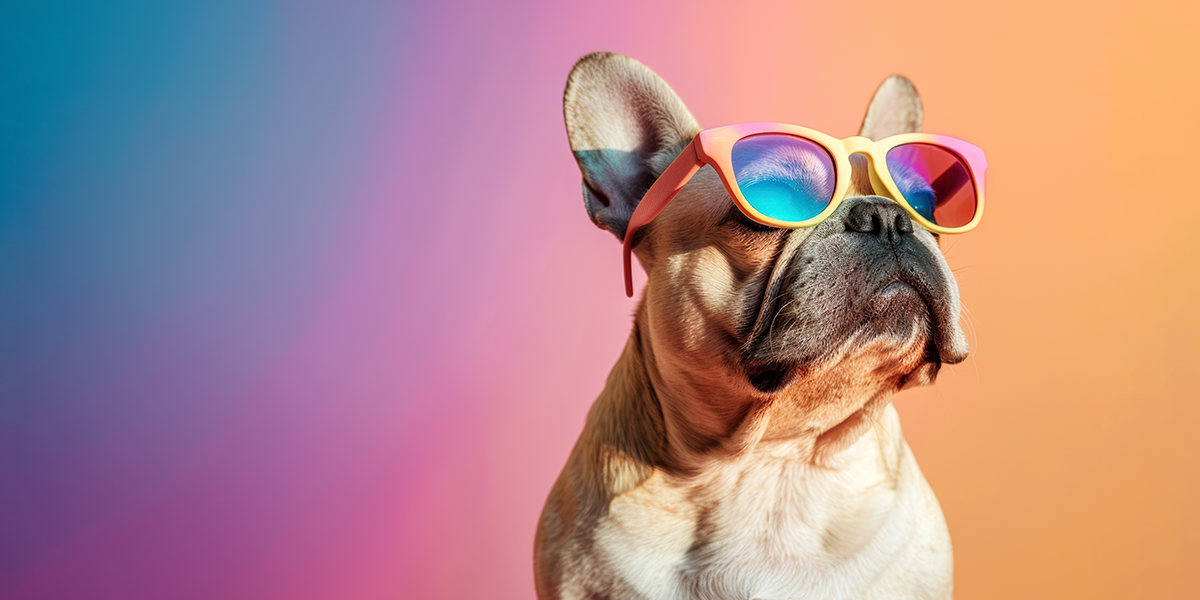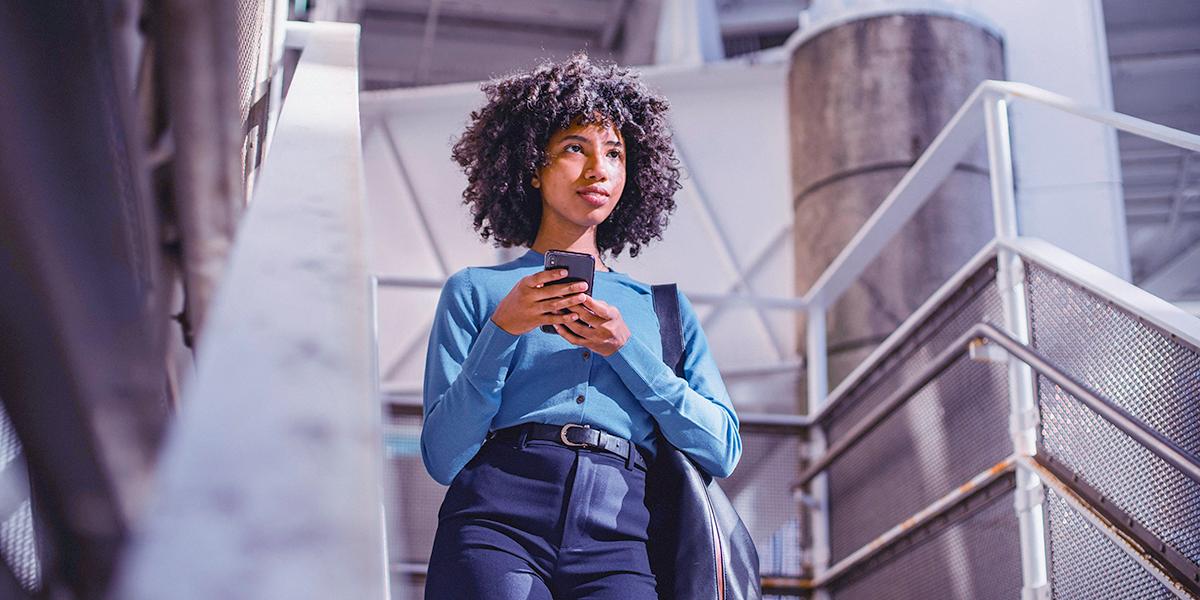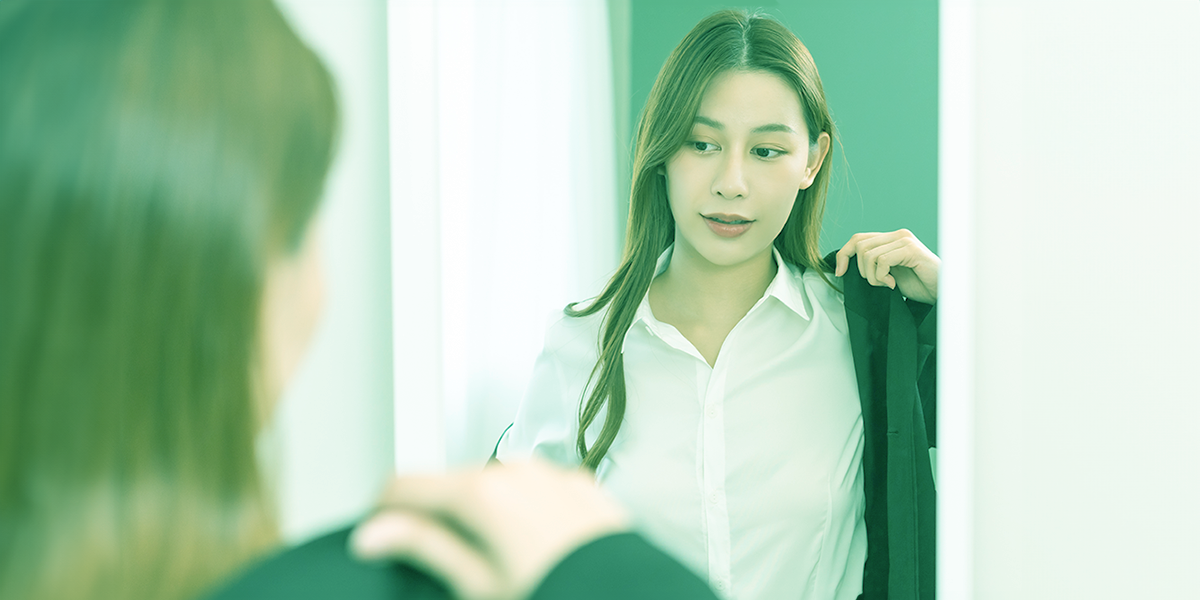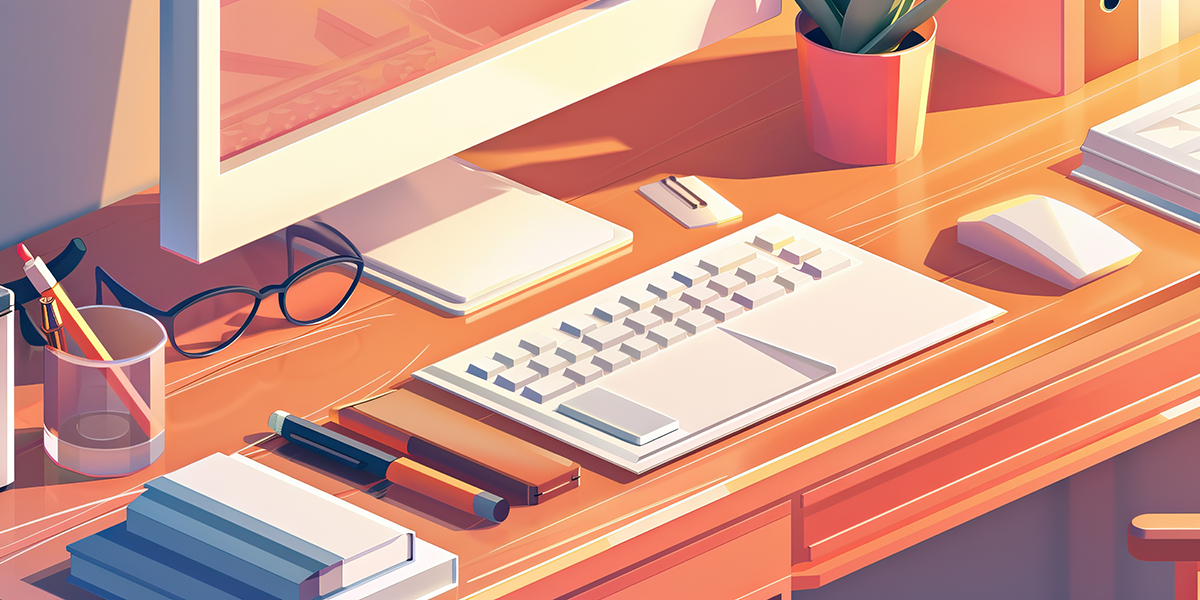
A few years ago, I shelled out $500 for professional headshots.
This was early on in my freelance career, and suddenly I had a lot of people looking at my LinkedIn profile and website.
I was still using old photos I’d nabbed on Facebook, and I needed something that not only looked more like current-day me, but also reflected my personal brand.
I’m thrilled with the pics I got, and I’d recommend everyone work with a professional photographer at some point in their life.
But what if you don’t have the extra cash or time to hire a photographer?
You’re in luck—these days, you can DIY a professional headshot with the camera on your phone and some simple editing tricks.
In this article, I’ll walk you through how to take a professional headshot on your own, so you can use it to take the next step on your career journey.
The basics: Key elements of a professional headshot
You might be used to capturing photos when you’re out with friends, or perhaps you’ve even tried your hand at artistic photography.
But when it comes to taking your own professional headshots, there are things you have to take into account that you likely aren’t thinking about with more casual photography.
Lighting is everything
In all types of photography, lighting is the most important factor. You can use natural and electric lighting to your advantage, to create images that make you look your best and are most pleasing to the eye.
Sometimes, you can let the sun do the work for you. The ideal lighting for photos is often on cloudy days, or in late-afternoon sun. You want light that is bright enough to capture you without too many shadows, while also not being so bright that you look washed out or have to squint.
Shooting indoors gives you more control over the lighting, but you might need to experiment to find the best solution. Try moving lamps around, using shades to filter lighting, or consider using equipment to help you get it right.
Lightboxes, umbrellas, ring lights, and backdrops can all help you get the lighting right, and you may be able to borrow these elements from your school, the local library, or a photography friend—or you could get them pretty cheap online.
For a tip on how to take a great headshot using clamshell lighting (a moderately advanced technique, but one you can probably pull off on your own with the right equipment), check out this video from photographer Will Hawkins:
Choose your background wisely
The backdrop of your photo can make a huge difference—it’s a chance for you to add some personality and color to your photo.
That being said, you don’t want a backdrop that is so busy it pulls away from your beautiful face. Avoid anything with really intricate patterns or writing on it.
You can choose a colorful background that isn’t too busy, especially if it complements your appearance—you may find standing in front of different backdrops changes the way your eyes, hair, and skin tone appear on camera.
These days, replacing the background on an image is pretty easy—more on that in the editing section of this article. So if you can’t find a backdrop you like, opt instead for a solid background—black, white, gray, darker blue, and green can all be good options—and you can later choose digital backdrops that you prefer.
Try different poses to find your angle
When you’ve found the lighting and backdrops you want to try, the next step is to strike a pose—or rather, a whole bunch of poses.
The way you hold your head and the position of your body will make a big impact on your professional headshot.
Try a few different angles to see what you like best. Try looking straight into the camera, tilt your head in slightly different angles, stick out your chin (even if it feels silly). Stand straight with your shoulders pulled back for a few shots, then try more casual poses—your arms crossed, leaning or sitting, etc.
Your face is unique, and has its own lines and angles that will catch light differently. Keep trying until you land on a few poses that you think best capture your professional side.
A happy, friendly expression is best
You want people to contact you after they see your headshot, which means you must look approachable and trustworthy in your photo.
While a smoky scowl might look good on your dating apps, it’s usually not the vibe you want for a professional photo.
Instead, aim for a big, confident smile. Look right at the camera, and if it helps, think of a good joke you’ve heard recently or a funny memory to get a natural smile out of yourself.
Consider wardrobe and makeup options
You’re going to be looking at this photo a lot, so make sure you are happy with how your clothing looks.
You don’t need to be dressed in anything too fancy, but you do want your clothes to look neat, well-fitting, and free of distracting wrinkles or patterns.
Wear something you would typically wear to the office or when meeting clients—you want to set expectations, so people will know what you’re going to look like when and if they meet you face to face.
Definitely do not take a beach selfie for your professional headshot, unless you’re a pro surfer or something like that. Similarly, don’t wear bulky coats or outdoor gear—stick with t-shirts, sweaters, blouses, button-downs and the like.
Makeup can also help you look your best on camera. Even if you don’t wear makeup day to day, try using concealer to hide blemishes, or you can make yourself look brighter and fresher with a skin-matching foundation, under-eye concealer, or a bit of blush on the cheeks.
Lastly, take the time to style your hair. Flyaways catch the light and can be very distracting in a photo, so consider adding product in your hair or using different styles that will frame your face nicely.
Set it right: How to use your phone to take headshots
Ok, you’ve got all the basics squared away, now let’s take some photos! You can most likely use the camera on your phone (or a friend’s phone) to get some excellent high-quality professional headshots.
Consider purchasing a cheap tripod to make it easier to take the photo from afar. Many of these come with a remote, so you can take the photo without having to use a timer.
Here are some additional tips depending on what type of system you’re using:
No flash, no problem
Hopefully, you’re in a bright enough space when you take your photo that your camera doesn’t try to turn on the flash.
But if for some reason it does, you want to turn this function off—otherwise it can make you look washed out or shiny on camera, or make your eyes reflective.
Using iPhone portrait mode
If you’re an Apple user, finding the best settings for a portrait is super simple.
At the bottom of your camera screen, simply look for Portrait mode, a setting designed to help you take a great portrait (duh). Usually, this setting does a good job on its own—you only need to select the Portrait option and let the camera do the rest.
Bear in mind that the Portrait setting will likely blur the background of your photo. This can sometimes help you stand out, but if you want a clear background in your photo, just use the typical “photo” setting.
Use HDR setting
If you don’t use an iPhone, you’ll want to look for what’s known as the HDR setting on your camera. This stands for “high dynamic range,” a fancy term for the setting that allows you to capture the most detail in your photo, even in very dark or very bright settings.
FYI, most cameras will automatically have the HDR setting up and running, but if not, you can usually update this in the settings.
Live photos, motion photos, or bursts
Consider experimenting with what Apple calls live photos and what Android refers to as motion photos. These are images that capture multiple frames within a few very short moments, sort of like a short video, but with higher quality for each individual frame.
Burst photos are similar—your camera will take a bunch of photos at once, to capture the nuances between different frames.
Once you’ve taken the photo, you can then scan through the multiple images/frames to find ones where you have the best expression, or your eyes are most open, or the lighting is hitting just right.
Editing software to make photos pop
Once you’ve snapped a few shots you think will work, it’s time to use your editing tools to make them look as professional as possible.
This is easier today than ever before, thanks to the many tools we have built into our phones and available to us online.
Start on your device
Before you start using other apps and programs to edit your photo, see what you can do right on your device.
All phones have different editing options, from simple lighting and color adjustments to full-on filters that can completely alter your image.
In general, you want to avoid any filters that significantly alter your photo or make you look less like yourself.
However, adjusting the lighting, saturation, shadows, and other elements of your photo can help it look more lively, bright, and professional.
If you’re an iPhone user and feeling uncomfortable with your editing abilities, you might want to give the “magic wand” a try. This is an auto-editing feature (which you can easily undo) that will adjust the image based on what your phone software thinks looks best.
Using an AI headshot app
You’ve probably heard of people using AI headshot apps—with varying results. I’ve had some that made me look like a strange distant relative of myself, but I’ve seen others who come out looking like they paid top-dollar for a professional headshot.
There are many AI headshot apps on the market, so you should shop around compare the results from different apps, as well as the pricing and privacy policies to find the best option.
Here are a few to check out:
Other photo apps
AI is the latest craze for professional headshots, but sometimes, a traditional photo editing app can do just as good a job (if not better).
There are so many to choose from on both Apple App store and the Play store, so here are a few of the highest rated that you might want to consider:
It might take a few shots, but with the right lighting, equipment, and photo editing software, you can capture a professional headshot that is ready for a public debut.
And when that time comes, check out these articles for ideas on how to use your headshot to advance your career:









